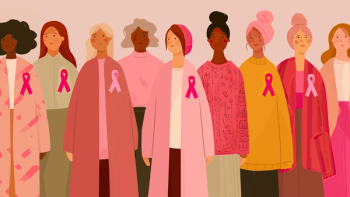
Bladder Cancer Awareness Month: Understanding Risk for Earlier Detection
May is recognized as Bladder Cancer Awareness Month. Know the facts and statistics in order to understand your risk for the disease and take preventative actions to guard your health.
In conjunction with Bladder Cancer Awareness Month, here are some facts about the disease to help raise awareness on the risks and preventative actions to take.
Bladder cancer is a disease that represents 4.6% of all new cancer cases in the United States, according to data from the National Cancer Institute (NCI). The earlier
Smoking cessation is one way to reduce your risk of bladder cancer. One study found that postmenopausal women demonstrated a significant reduction in their risk for the disease
While the average age at diagnosis for bladder cancer is 73, the risk for developing the disease increases with age. Additionally, a woman’s
There are also different subtypes of bladder cancer, which means there is not a one-size-fits-all solution when it comes to treating advanced bladder cancer, according to researchers at Baylor College of Medicine.
To learn more and stay up to date on bladder cancer and cancer in general, sign up for




